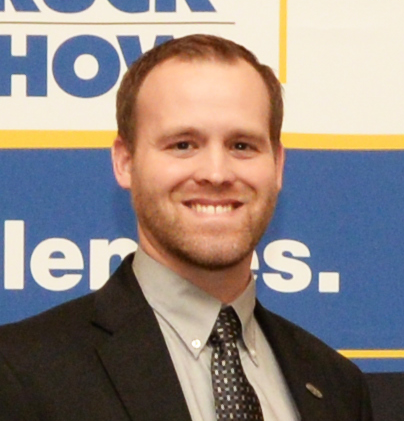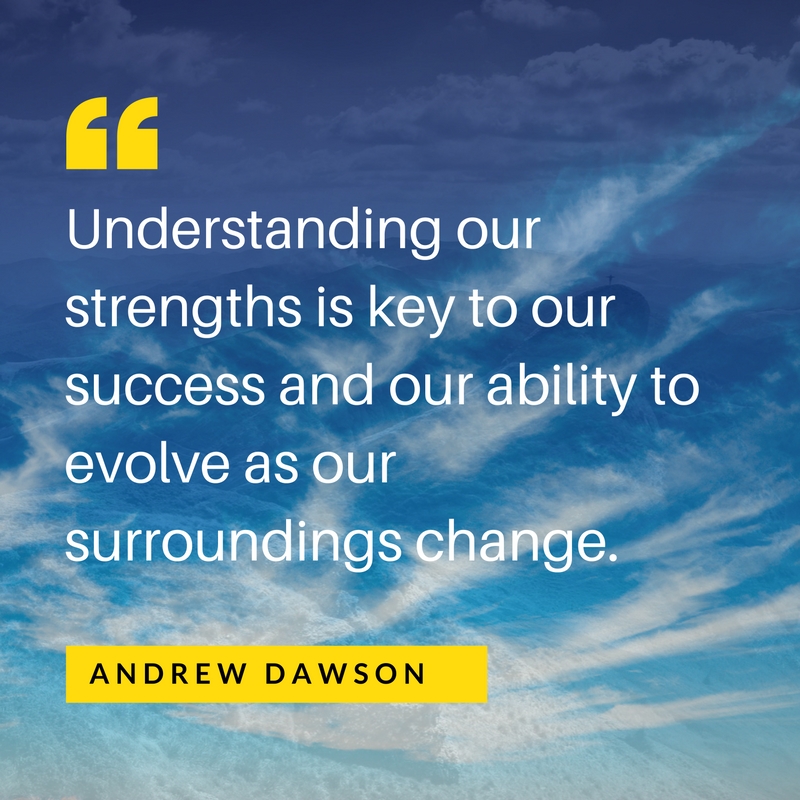 By Former Generation Next Chairman Andrew Dawson
By Former Generation Next Chairman Andrew Dawson
This article was originally published in the September 2016 issue of Generation Next Edition.
The term “people leader” is becoming very popular among leadership training organizations and within corporations. But what exactly is a people leader?
Is it a supervisor, manager, corporate executive, senior employee, coach, president? The list goes on and on. The truth is, it could be all of the above.
A people leader is not defined by role or position within an organization. It is defined instead by actions and the ability to positively influence the lives of individual co-workers and those within the community.
But to do that, we must understand ourselves and those around us. 
We are all blessed with many characteristics that make us who we are, that naturally define our individual strengths and weaknesses. Understanding our strengths is key to our success and our ability to evolve as our surroundings change. Our strengths are, and will always be, the initial drivers of our individual success. As leaders, it is important to identify our strengths and understand how we can use them to enhance our weaknesses and the weaknesses of others.
Recognizing our strengths is generally the easy part, but the more important – and more difficult – hurdle to becoming an effective people leader is to understand our weaknesses.
Yes, we all have weaknesses – although at times it may be hard for us to admit. It’s in recognizing and acknowledging these weaknesses that we receive the necessary awareness needed to be intentional about improving these traits. And it’s this deliberateness to improve our weaknesses that will allow us to better communicate, guide and lead people. Let me use myself as an example.
One of my self-defined weaknesses is interjecting or speaking too soon during a conversation. It’s painful to admit, but it’s the truth and I’ve seen myself do it both at work and at home. The downfall to this weakness is obvious; it can be detrimental to the tone of a meeting or conversation. At home, my wife is not afraid to call me out on it, but in the office you generally won’t get that type of feedback from your peers so it is critical to learn to recognize it yourself. I understand why I do this, as most of us fall into one of two response categories – reflectors or reactors. Of course there are some that fall somewhere in between, but I am without question a reactor – meaning I generally don’t take, or need, the time to sit back and think before providing a response. My natural tendency is to react or respond immediately.

Don’t get me wrong; it’s not all bad. Being a reactionary person has a lot of positives, like being able to provide feedback on the spot, and having the ability to be flexible in the midst of change. But, as I mentioned earlier, one weakness in being a reactor is the challenge to pause or wait to provide a response. As someone is speaking, my brain automatically starts to react and for whatever reason, I want to immediately voice my response before I lose my train of thought.
Waiting to provide a response sounds like common sense right? This should be easy, and it is – as long as I am very intentional. As a result, I keep this in mind throughout everyday as I engage with others to make sure I am listening and communicating well. I find ways to track my thoughts so I don’t lose them, but also don’t speak prematurely. In doing this, I’ve found that sometimes a response isn’t even needed.
This is one of my weaknesses and I’m not afraid to admit it. It’s something I work on daily in order to improve my ability to be a strong people leader. And it’s by being intentional and self-aware that I continue to make strides to more effectively communicate with my team, co-workers, community and family. I focus everyday on being a better listener.
Once we understand our own weaknesses, we can take the final step to becoming an effective people leader – learning the strengths and weaknesses of those with whom we interact. This is no easy task. As I said before, we are all blessed with many characteristics that make us unique.
The ability to understand how someone responds – reactive or reflective, how he or she prefers to learn and where their strengths lie – is critical to effective communication. We are all people of habit and we want to learn and engage in the way that is most comfortable to us; however, that may not be the best way for others.
As people leaders it is not only our responsibility to understand this, but to then do our best to provide and foster an environment that allows people to flourish – an environment that complements others’ strengths. Unders Each of us can lead, and lead effectively, if we take the time to get to know and understand the people in our lives.
Learn more about Generation Next.
Visit NTEA Insider, a bi-weekly digital publication providing the latest news for the vocational truck and equipment industry.